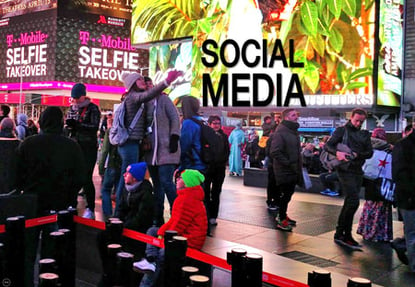At last week's Social Media Club of Kansas City breakfast, Aaron Bollinger of KickApps.com did a strategy-instigating presentation on “Creating a Unique Social Experience.” He also bought breakfast for everyone in attendance (including me - just want to make sure the FTC is taken care of here).
One of Aaron's central ideas was how KickApps can allow a social network audience to participate in social media commentary in one click. One case study demonstrated the positive participation, traffic, and subscriber impact of allowing visitors of local TV news websites to provide a one-click reaction to stories vs. taking the time to write a comment.
 Removing barriers to make it easy for social network audiences to share their perspectives prompted me to share six others things we should avoid with audiences online and (to the extent they apply), offline as well:
Removing barriers to make it easy for social network audiences to share their perspectives prompted me to share six others things we should avoid with audiences online and (to the extent they apply), offline as well:
1. Don't require audience members to go where they aren't interested in going, especially for content of lesser value. It's not an audience-enhancing move to require members to leave a content-rich environment to go somewhere less content-rich for an essential function. So if you want your audience to leave Facebook to visit your website, you better have an even richer experience waiting at your landing page.
2. Don't divide your audience into groups so small they become unsustainable. We're seeing this a lot in live event social media right now. Conference organizers want to create very niche forum discussions among an audience of a few hundred people. In every case, the strategy has fallen flat because an average-sized audience, divided 15 ways, can't be expected to actively engage and keep a social network sub-community viable.
3. Avoid placing unnecessarily high hurdles in front of social network members to participate with you or with each other. This was at the heart of Aaron's presentation, but it extends further. As a marketer, I love having all kinds of data on current and potential customers and want to gather it anywhere possible. But in asking lots of registration questions online and making them required, how many potentially valuable community members do you lose in your network? Instead, make it easy to join the audience and grow in your knowledge of audience members over time as you become more valuable to each other.
4. Don't make them suffer through your brand identity crisis. This can be especially challenging for solopreneurs and small businesses with less considered brand identities. A huge part of a brand promise is predictability. Even if your brand is edgy, it should be predictably edgy. So when communicating with your audience, make sure you behave in a way that's consistent with what your audience expects.
5. Never make your social media audience wonder where you are or when you'll return. I'm always preaching to anyone who will listen - be consistent in your brand engagement, especially in social media. Instead of introducing your social media presence with heavy activity and then disappearing, engage with your audience regularly and with a dependable rate of frequency. Even though there will be times when you'll be more active in your network than others, muster the strategic discipline to be visible and participatory on a regular schedule.
6. Don't make it easy for your social network to get off the hook. I first learned about the concept of "high performing customers" at Arizona State University. The concept focuses on the vital roles customers play in service delivery processes and the importance of putting mechanisms in place so they can fulfill the roles effectively. It's an interesting one when applied to social media where a high performing customer's role is typically some form of participation. This implies taking the time to think strategically about how you instruct, cultivate enthusiasm, and reward audience members for fulfilling their necessary roles in making social networks stronger and more viable.
In order to embrace the "make it easier to participate" concept, click your reactions to this post in the brief survey at the end of this online post!
If you'd like to go further than simply voting, please share your ideas: What are other things we should all avoid with our social network audiences? - Mike Brown
The Brainzooming Group helps make smart organizations more successful by rapidly expanding their strategic options and creating innovative plans they can efficiently implement. Email us at brainzooming@gmail.com or call us at 816-509-5320 to see how we can help you define a brand strategy firmly tied to business yet recognizing the impact of social networking on your customers.
[memedex: pollid#492312]



